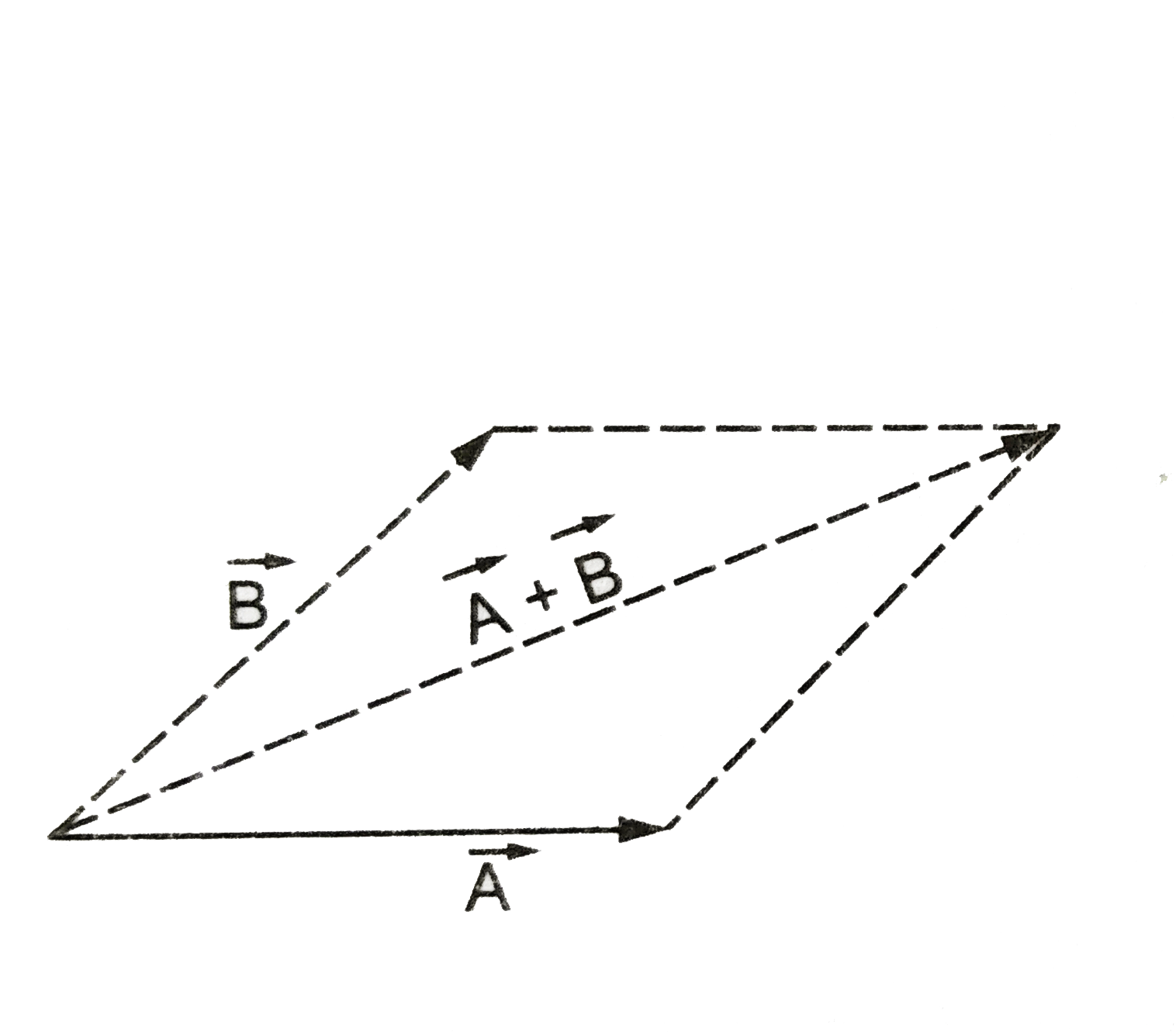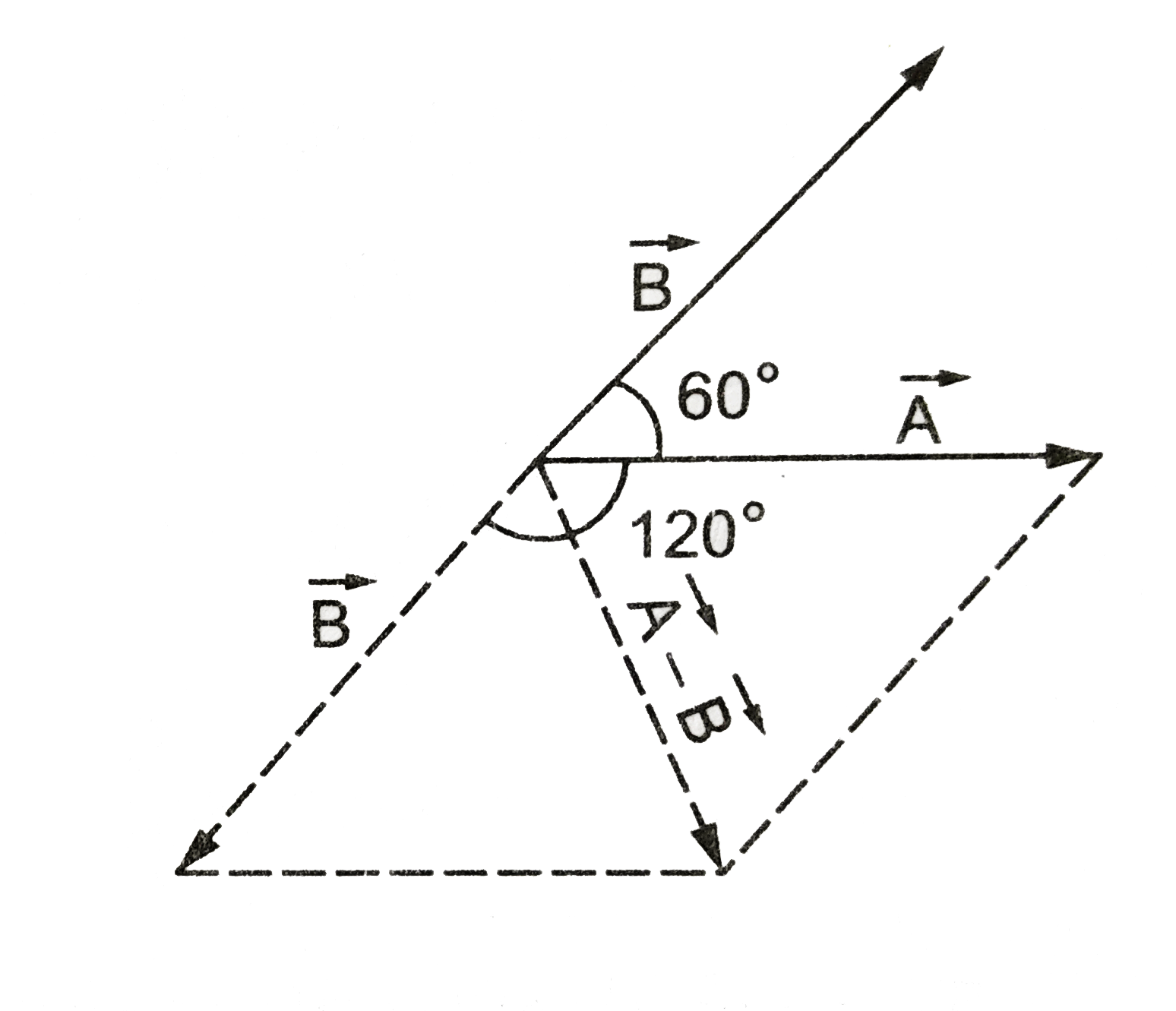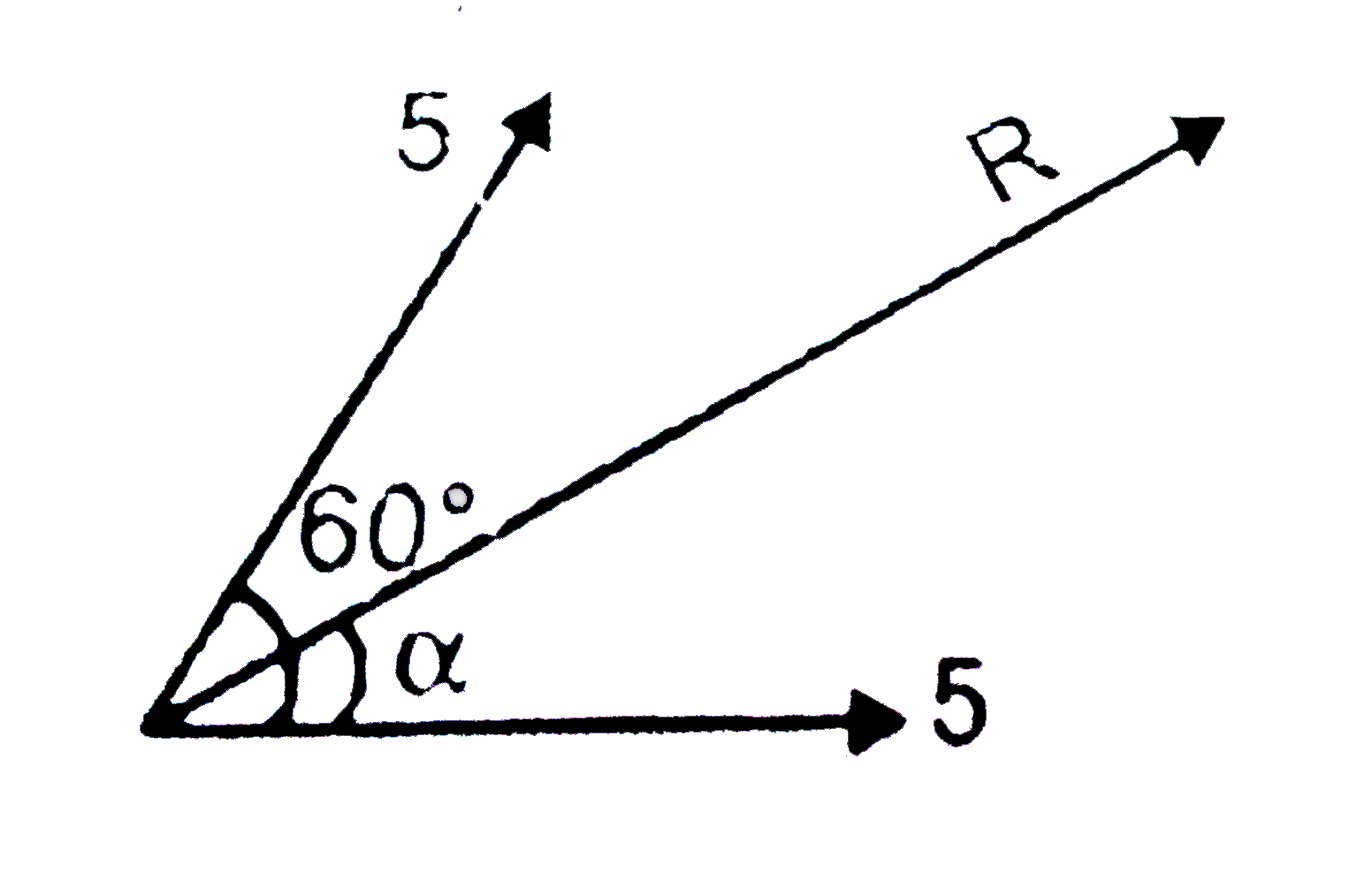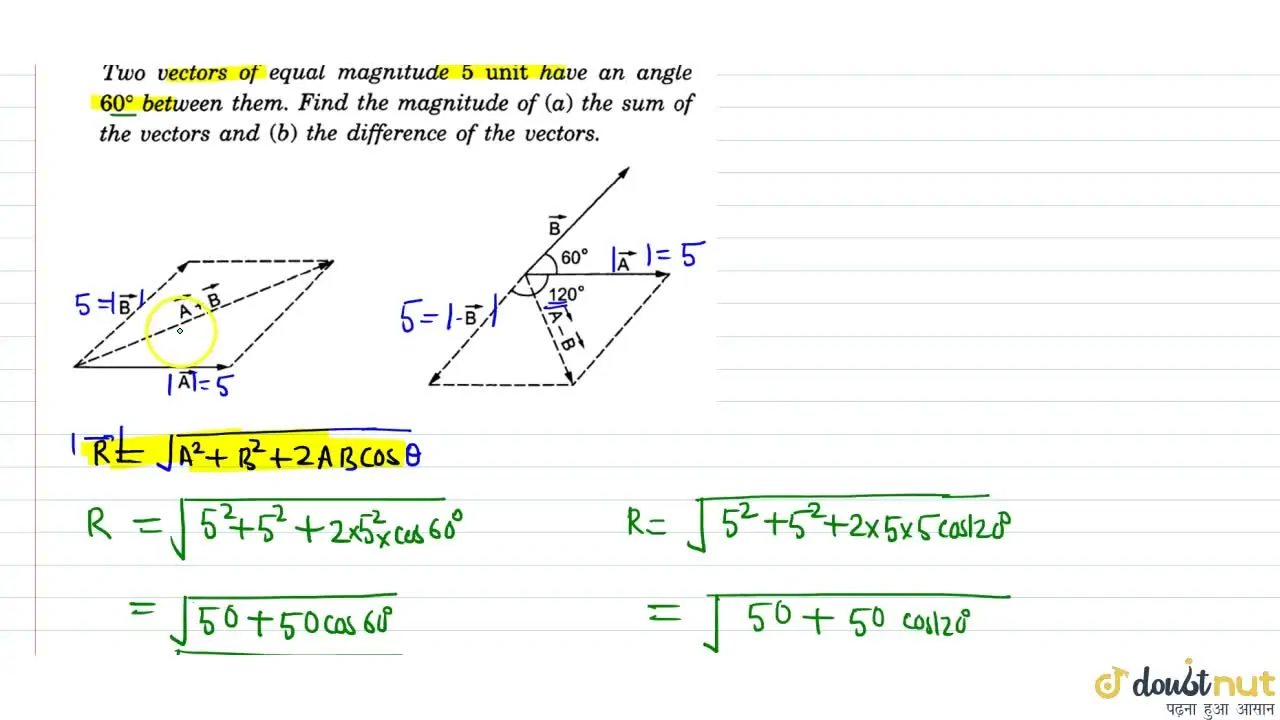Two vectors of equal magnitude 5 unit have an angle 600 between them. Find the magnitude of a the sum of the vectors and b the difference of the vectors.  .
.  .
.
ure shows the construction of the sum
→A+→B and the differece →A−→B.
a→A+→B is the sum to →Aand→B. Both have a magnitude of unit nd the angle between them is 600. Thus, the magnitude of the sum is
∣∣→A+→B∣∣=√52+52+2×5x5cos600
=2×5cos300=5√3 unit.
b. →A−→B is the sum of →Aand(−→B). As shown in the ure, angle between →Aand(−→B) is 1200. The magnitude of both →Aand(−→B) is 5 unit so,
∣∣→A−→B∣∣=√952+52+2x5×5cos1200)
1 = 2xx cos6060 = 5 unit.
Related Playlists
- BOOK - HC VERMACHAPTER - PHYSICS AND MATHEMATICSEXERCISE - Worked Out Examples18videos
PHYSICS AND MATHEMATICS
- BOOK - HC VERMACHAPTER - PHYSICS AND MATHEMATICSEXERCISE - Short Answer14videos
PHYSICS AND MATHEMATICS
- BOOK - HC VERMACHAPTER - NEWTON'S LAWS OF MOTIONEXERCISE - Exercises42videos
NEWTON'S LAWS OF MOTION
- BOOK - HC VERMACHAPTER - REST AND MOTION : KINEMATICSEXERCISE - Exercises51videos
REST AND MOTION : KINEMATICS
Similar Questions
Two vectors having equal magnitude of 5 units, have an angle of 60∘ between them. Find the magnitude of their resultant vector and its angle from one of the vectors.
 View Solution
View SolutionTwo vectors of equal magnitude 2 are at an angle of 60∘ to each other find magnitude of thei. Sum & difference .
View SolutionTwo vectors having equal magnitudes A make an angle θ with eahc other. Find the magnitude and direction of the resultant.
View SolutionIf the angle between two vectors of equal magnitude "P" is θ the magnitude of the difference of the vectors is
View SolutionIf the angle between two vectors of equal magnitude P is "theta" ,the magnitude of the difference of the vectors is
View SolutionTwo vectors have magnitudes 2 m and 3m. The angle between them is 600. Find a the scalar product of the two vectors b. the magnitude of their vector product.
View SolutionIf two forces of equal magnitude 4 units acting at a point and the angle between them is 120∘, then find the magnitude of direction of the sum of the two vectors
View SolutionTwo vectors of equal magnitude P are inclined at some angle such that the difference in magitude of resultant and magnitude of either of the vectors is 0.732 times either of the magnitude of vectors. If the angle between them is increased by half of its initial value then find the magnitude of difference of the vectors
View SolutionThere are two vectors of equal magnitudes. When these vectors are added, then magnitude of the resultant is also equal to the magnitude of each of the two given vectors. Angle between the vectors is
View SolutionTwo vectors of equal magnitude are acting through a point. The magnitude of resultant is equal to the magnitude of either vectoe. Find the angle between the vectors.
View Solution


